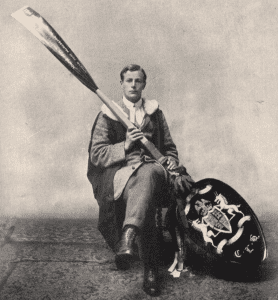 EDINBURGH, SCOTLAND – Continuing our State of the Unions profiling a year ahead of the Rugby World Cup for each of the Six Nations unions, next up is Scotland Rugby, who only avoided an ignominious Wooden Spoon through a last second Duncan Weir drop-goal in Rome.
EDINBURGH, SCOTLAND – Continuing our State of the Unions profiling a year ahead of the Rugby World Cup for each of the Six Nations unions, next up is Scotland Rugby, who only avoided an ignominious Wooden Spoon through a last second Duncan Weir drop-goal in Rome.
Domestic Game
Scotland’s domestic game is undeniably a rich man, poor man scenario. On the macro level, things are improving, with Glasgow securing some of Scottish domestic rugby’s best results over the past two years. For the first time, a Scottish side made the final of the Pro12, while the Scotstoun Stadium was regularly filled for Warriors matches. However, Edinburgh continues to languish, severely hurt by their lack of a stadium. Forced to play matches in the cavernous Murrayfield, the capital’s team struggles to draw crowds and suffers from a game day atmosphere generously described as “anemic.” The last time the Scottish Rugby Union made a serious attempt to find the team a new home was in 2012, when Meadowbank Stadium (which served as the club’s home from 2002-2004) was rejected as an alternative venue. Scottish rugby has not yet suffered the international exodus which has been plaguing Wales, though Greig Laidlaw moved to Gloucester this offseason, while Stuart Hogg‘s situation with Glasgow looked unsettled at the end of last season,when he was left out of the final against Leinster. However, he has resumed training with the side and looks set to continue for at least another year. In sum, domestic rugby’s biggest problem in Scotland is likely the long-term future of Edinburgh, and finding a workable stadium solution that will allow the team to build a fan base, as occurred in Glasgow. The SRU is wisely only propping up two teams, and the BT Sport naming rights deal at Murrayfield went a long way toward solving the union’s financial woes of recent years. Scotland is also helped by its developmental situation, which produces a large number of solid domestic players who produce for Glasgow and Edinburgh, but are not quite international stars.

Coaching Situation
Scotland almost took a massive step forward by hiring Vern Cotter as their new head coach. However, by retaining the imbecilic Scott Johnson as their Director of Rugby (a promotion), the SRU managed to undermine their best organizational move of the past decade. Johnson tried his best to destroy the confidence of his best players, removing his captain Kelly Brown from the team for “match-up reasons” before reinstating him after public outcry (and an embarrassing defeat to England). By then, the Scottish team had essentially given up on their coach, evidenced by their shocking display in a 51-3 loss to Wales. After that debacle, Johnson claimed that he was “happy with how [Scotland were] progressing,” a farcical claim. Cotter coached Scotland to three unimpressive victories during their summer tour. While the domestic game rests on relatively solid foundations, the international side is a mess, and the continued presence of Johnson, who has been utterly unable to stick with a side, is largely to blame.

National Team
Johnson’s justification for rotating the side so heavily during his tenure was to “build depth.” Though he may have handed out a raft of new caps, in doing so, he completely neglected developing the side that he had. Scotland will be living with that mistake for years to come. Players who looked like international breakouts, including Richie Gray and David Denton, have not been allowed to develop properly, and now sit in a netherworld between past promise and current results. Compare that to the stable core of Stuart Lancaster’s England side, and you get a clear contrast between a team with a philosophy versus one stumbling blindly in the dark, hoping that something sticks. The Six Nations defeat to Wales was one of Scottish rugby’s lowest points in a decade full of such lows, and much rests on Cotter’s ability to build a cohesive side that has experience playing together as a unit. Tellingly, the strength of the current team is probably the back line, which was allowed to develop together relatively unhampered by Johnson’s continual meddling. Matt Scott and Alex Dunbar are a formidable center pairing, while Duncan Weir and Finn Russell should battle over the number 10 shirt for years to come. Laidlaw and Hogg are the kinds of players you can build a side around. The wings are solid as well, with Tim Visser proving an excellent finisher. If the side can get a relatively solid run together, rather than being rotated in and out of the lineup, Scotland may have a promising future ahead.

Overall
Scotland need continuity more than anything else, though 2015 may come too quickly for Cotter to stamp his mark. The match against Samoa will likely determine Scotland’s fate. Missing out on the quarterfinals is no longer unthinkable after 2011, while avoiding the Wooden Spoon in the immediate future is likely Cotter’s secret charge. Group B is relatively solid from top to bottom, featuring South Africa, Samoa, Japan, and the United States, none of whom will provide the Scots with an easy win. Things may get worse before they get better, but Scotland has the talent to make some noise if they sort out their internal difficulties.

